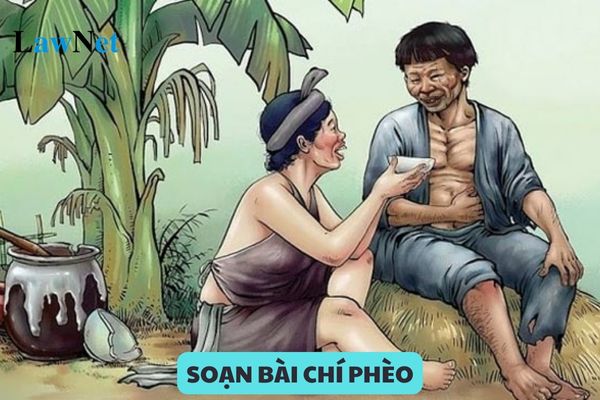Preparation of lesson about the work named “Chi Pheo” in Literature program for Grade 11 in Vietnam
Preparation of lesson about the work named “Chi Pheo” by the author Nam Cao in "Ket noi tri thuc" Literature program for Grade 11 in Vietnam
The work "Chi Pheo" by author Nam Cao is one of the suggested materials in the upper secondary school Literature program issued along with Circular 32/2018/TT-BGDDT.
Refer to the preparation for the lesson about the work named “Chi Pheo” in "Ket noi tri thuc" Literature program for Grade 11 below:
| Plan for lesson about the work named "Chi Pheo" in "Ket noi tri thuc" Literature program for Grade 11 1. Author Nam Cao Nam Cao’s real name is Tran Huu Tri, born on October 29, 1915, in Dai Hoang village, Cao Da ward, Nam Sang district, Ha Nam province (now Hoa Hau commune, Ly Nhan district, Ha Nam province) and passed away on December 18, 1951. Nam Cao’s creative style is the harmonious combination of realism, humanitarianism, satire, and philosophy. Some of Nam Cao's outstanding short stories include: Chi Pheo, Hon Thua, Ong Lao Hac, Mot bua no... 2. Structure Consists of 3 specific parts: - Part 1 from the beginning to "the entire Vu Dai village also did not know": Chi Pheo appears with cursing - Part 2 continues to "not ordering the household to boil water quickly": Chi Pheo loses all humanity - Part 3 the remaining part: Awakening, awareness of the tragic life of Chi Pheo 3. Summary of content Chi Pheo is an orphan picked up from an old brick kiln, he grew up thanks to the care of the Vu Dai villagers. After working for the Ba Kien family, Chi Pheo was falsely accused and imprisoned for 7 years. After returning, Chi Pheo goes to Ba Kien's house to make a scene. Ba Kien shrewdly turns Chi Pheo into his henchman. In a drunken night, Chi Pheo meets and sleeps with Thi No. He falls ill, Thi No takes care of him, and when he desires to reform, Thi No rejects him. Chi Pheo takes a knife to Thi No’s house but halfway detours to Ba Kien’s house and kills Ba Kien before ending his own life. 4. Value of content The work is the author's denunciation of a corrupt, unjust pre-August Revolution society, especially the oppressive ruling system in the countryside. Through the character Chi Pheo, Nam Cao exposes the cruel and hypocritical façade of the evil landlords, epitomized by Ba Kien. Moreover, it reflects a belief in the good nature of people, affirming the value of love and compassion. Despite being corrupted by society, Chi Pheo retains some good nature. When awakened by Thi No, Chi Pheo longs to reform. The work has profound realistic and humanitarian values. It raises questions about society’s responsibility towards individuals and the path to saving people from degradation. 5. Artistic value The author has built the character Chi Pheo with complex, profound psychological developments. Other characters like Ba Kien, Thi No are also vividly depicted, contributing to highlighting the work's theme. This demonstrates the peak of character-building art. The art of describing intricate, deep character psychology goes into the characters' inner lives, exploring complex developments. The language of the work is simple, rustic, and close to the life of laborers. Significance of the image of the old brick kiln in the work Chi Pheo: Suggests the cyclical tragedy of Chi Pheo’s life, the tragedy of unfortunate individuals being oppressed, trampled, and deprived of their right to live and be happy. This is not just the tragedy of an individual but a common phenomenon with regulatory characteristics in the old society. *Note: The content of the preparation for the lesson "Chi Pheo" in "Ket noi tri thuc" Literature program for Grade 11 is for reference only! |
|---|
Formula for calculating the average score of Literature subject of Grade 11 in Vietnam
Based on Article 9 of Circular 22/2021/TT-BGDDT, the formula for calculating the average score of Literature Grade 11 is as follows:

Where:
- TDDGtx: Total continuous assessment points (oral test points, 15-minute test points)
- DDGgk: Mid-term test points
- DDGck: Final exam points
- DDGtx: Number of frequent assessment points.

Preparation of lesson about the work named “Chi Pheo” in Literature program for Grade 11 in Vietnam (Internet image)
Responsibilities of Literature teachers in student assessment in Vietnam
Based on Article 19 of Circular 22/2021/TT-BGDDT, the responsibilities of Literature teachers in student assessment in Vietnam are as follows:
- Conduct continuous assessments; participate in periodic assessments as assigned by the Principal; directly record or enter scores, and assessment levels into the Student Tracking and Assessment Book (by class), the Teacher's Student Tracking and Assessment Book.
- Calculate the average score of the subject; summarize the assessment level by semester, the whole school year; directly record or enter scores, and assessment levels into the Student Tracking and Assessment Book (by class), the Teacher's Student Tracking and Assessment Book, Student Record Book.
- Provide comments on the training results of students to the homeroom teacher.

